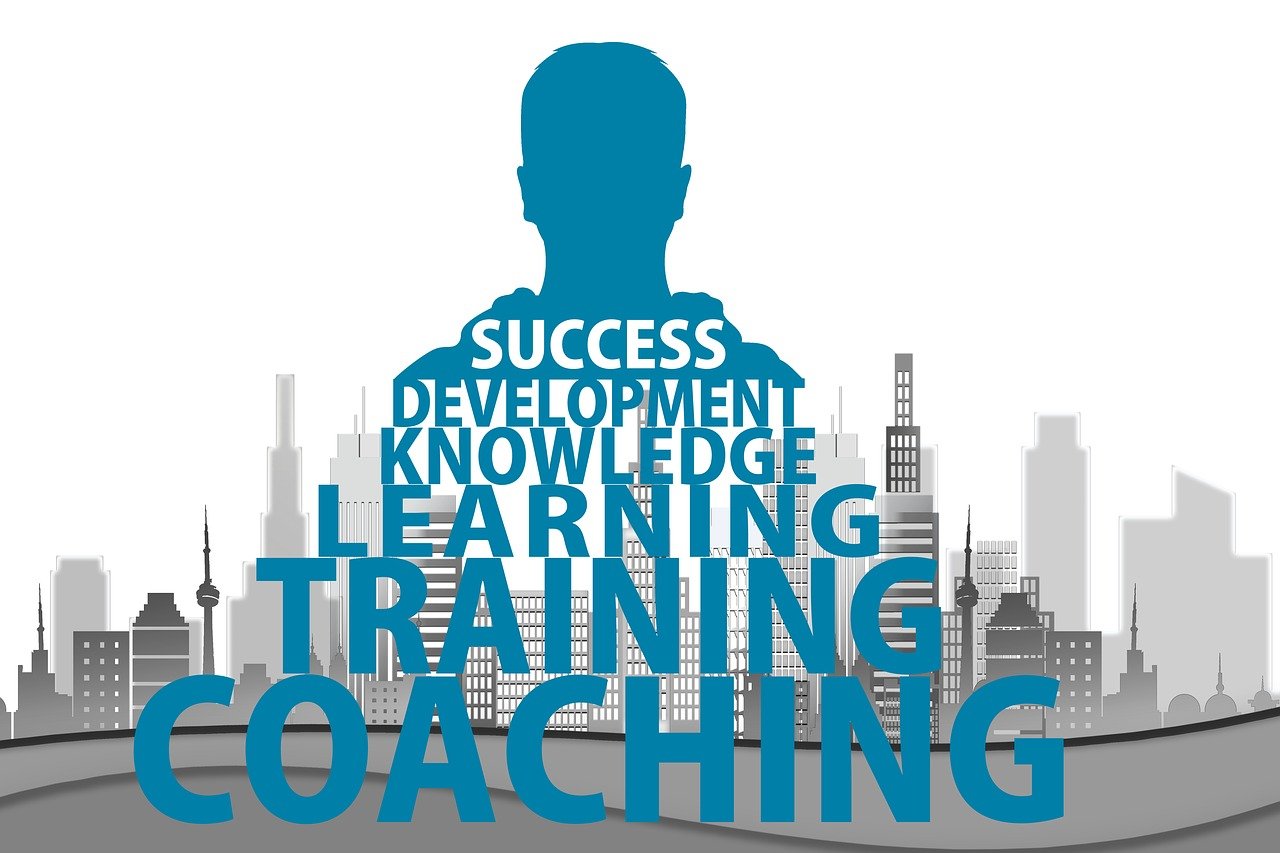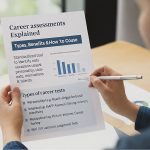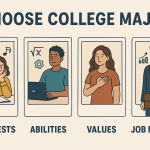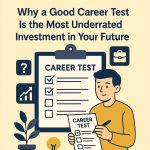Career News
Are Free Career Tests Actually Accurate?

Introduction: The Allure And Risk of a Free Career Test
Type “free career test” into Google and you’ll get millions of hits promising to uncover your life’s purpose in under ten minutes. In an era of layoffs, industry pivots, and remote-work opportunities, it’s tempting to trust the first quiz that pops up. But can a no-cost tool that takes less time than brewing coffee really steer something as important as your career?
This deep-dive article separates hype from help by examining:
- How professional career assessments are built
- The most common shortcomings of free tools
- Benchmarks you can use to judge accuracy
- A head-to-head look at six popular free career tests including the free version of the MAPP® assessment
- A step-by-step strategy to use free data without sabotaging your future
By the end, you’ll know exactly when a free career test is “good enough,” when to upgrade to a paid assessment, and above all how to translate any set of results into real-world career moves.
- The Science Behind Career Assessment Accuracy
1.1 Reliability and Validity in Plain English
- Reliability answers, “Would I get roughly the same result if I took the test again next week?”
- Validity asks, “Does this test predict what it claims such as job satisfaction or performance?”
Professional assessments demonstrate both through peer-reviewed research, large norm samples, and transparent technical manuals. Free tools rarely publish such data.
1.2 Construct Coverage: Traits, Interests, Values, and Aptitudes
A robust career assessment measures more than surface preferences:
| Construct | Why It Matters | Example Metrics |
| Personality Traits | Predict work style, team fit, stress behaviors | Big Five scores |
| Interests | Signal long-term engagement | Holland Codes (RIASEC) |
| Motivators/Values | Drive intrinsic satisfaction | MAPP’s 71 motivational factors |
| Cognitive or Technical Aptitude | Forecast learning curve and performance | Abstract-reasoning tests, coding challenges |
Most free career tests target only one or two constructs, limiting predictive power.
- Typical Weaknesses in Free Career Tests
- Small or Unrepresentative Sample Sizes – Many quizzes normed on a few hundred college students cannot generalize to global job seekers.
- Lack of Forced-Choice Design – Easy “agree/disagree” scales invite socially desirable answers; forced-choice triads (used by MAPP, DISC, Hogan) reduce bias.
- Over-Simplistic Reports – Generic, feel-good statements (“You are creative and like people”) resemble horoscopes more than data.
- No Ongoing Validation – Paid assessments invest in continuous research; free tools often stagnate.
- Hidden Upsell – Some sites gate accurate results behind paywalls after the “free” test, providing a sample for free but paywall for the good stuff.
- Benchmarks for Judging Accuracy
| Benchmark | What to Look For | Red Flag |
| Psychometric Transparency | Cronbach’s alpha ≥ 0.70, test-retest coefficients | No technical info |
| Sample Size & Diversity | ≥ 1,000 participants across age, gender, culture | “We surveyed our classmates” |
| Construct Breadth | Multiple scales: traits and interests/values | Single 10 item preference list |
| Actionable Output | Role fit, environment suggestions, career paths | Vague adjectives only |
| Ethical/Data Compliance | GDPR compliance, opt-out options, anonymized data | Email capture without policy |
- Free Career Tests Under the Microscope
Below are six of the web’s most-searched free career test platforms, graded on a 5-star accuracy scale.
| # | Free Test | Core Model | Transparency | Actionability | Accuracy ★ (1-5) |
| 1 | MAPP Assessment Free Snapshot | 71 Motivational Factors | Tech manual & large (9 M) norm group for paid version; free version reveals top motivators & job matches | Job-match list (O*NET) + brief narrative | ★★★★☆ |
| 2 | 123test Holland Code Quiz | RIASEC Interests | Public domain model, limited reliability data | 3-letter Holland code + sample occupations | ★★★☆☆ |
| 3 | Truity Big Five “Career Personality Profiler” Free Preview | Big Five + Holland blend | Blog posts cite research; paid report for full data | Shows Big Five % + interest clusters | ★★★☆☆ |
| 4 | Princeton Review Career Quiz | Energy Style & Work Style (proprietary) | No psychometrics published & limited | 4-style quadrant with major suggestions | ★★☆☆☆ |
| 5 | CareerExplorer by Sokanu Lite | Interests, Personality, Goals | 500-item adaptive engine (full version); free cut-down shows limited top careers | Traffic-light match scores; salary data | ★★★☆☆ |
| 6 | BuzzFeed “What Job Should You Have?” | Pure novelty | None | Entertainment only | ★☆☆☆☆ |
Spotlight: Why the Free MAPP Snapshot Stands Out
- Uses the same forced choice triads as the paid version, mitigating social desirability and allowing optional additional detailed paid results without unnecessary retake.
- Draws on a 25-year norm database of 9 million global users.
- Free report lists compatible occupations mapped to O*NET codes valuable for real job research & employment.
Downside: deeper interpretations and motivational hierarchy graphs sit behind the one-time paid unlock, but the snapshot alone outperforms most free tools.
- When Is a Free Career Test “Good Enough”?
- Early Exploration – In high school or early college, even a basic assessment can spark curiosity.
- Low-Stakes Decisions – Choosing electives or volunteer roles.
- Triangulation – Combining insights from multiple free tools for pattern recognition.
If you’re making a high-stakes decision quitting a job, paying for grad school, relocating internationally invest in a validated paid assessment or professional coaching session.
- Using Free Data Without Sabotaging Your Future: A 5-Step Plan
Step 1: Take Two or Three Top-Rated Free Tests
Start with the free MAPP snapshot and an open-source Big Five (IPIP-120) to cover both motivational drivers and personality traits. Record results in a spreadsheet.
Step 2: Identify Overlapping Themes
Example: Analytical in MAPP + High Conscientiousness in Big Five + “Investigative” in Holland all point toward research, data, or engineering roles.
Step 3: Reality-Check with Work Samples
Job shadow, freelance, or take a MOOC project in the suggested field. Monitor energy and engagement levels.
Step 4: Talk to Mentors and Peers
Share your spreadsheet patterns; ask colleagues if they’ve noticed those strengths in you. External feedback filters self-blindness.
Step 5: Upgrade If Stakes Rise
If everything aligns and you’re poised to switch careers, complete a paid assessment like the full MAPP, CliftonStrengths, or Hogan to confirm and deepen insights.
- Expert Answers to Common Questions
Q: Can free career tests hurt my chances with employers?
A: Only if you rely on gimmicky quizzes that label you with buzzwords and you present that as “science.” Stick to reputable free tools and frame results as one data point in self-discovery.
Q: Is the paid MAPP worth it if the free version seems helpful?
A: The paid report adds in-depth motivator hierarchy, temperament patterns, and a broader job match list. If you’re actively job-hunting or seeking a mid-career pivot, the extra clarity repays itself in a single smarter career move or a satisfying career.
Q: Do free tests sell my data?
A: Check privacy policies. Some monetize through aggregated trend reports. Reputable platforms (MAPP) anonymize data and comply with GDPR.
- Final Verdict: Free Career Tests Are a Starting Line, Not the Finish
A high-quality free career test can illuminate interests and surface motivational clues, but accuracy varies widely. Use the benchmarks in this article to separate entertainment from insight, and remember:
- Cross-validate with multiple tools for pattern reliability.
- Test in the real world through short projects or informational interviews.
- Invest wisely if the decision’s expensive, so should be the assessment.
Free career tests, when selected judiciously, are stepping-stones helpful but incomplete. The ultimate accuracy comes from merging validated data, lived experience, and continuous reflection as your professional journey unfolds.





